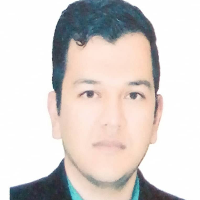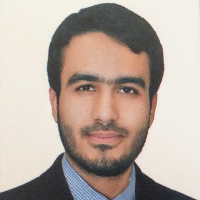مقالات رزومه رامین تقی زاده
-
زمینه و هدف
سوء تغذیه در کودکان علاوه بر عقب ماندگی رشد جسمی و ذهنی، با کاهش یادگیری و عدم توانایی در کسب مهارت همراه می باشد. در این ارتباط، مطالعه حاضر با هدف بررسی وضعیت تغذیه ای کودکان 6-5 ساله "کانون شکوفا" (کودکان کار) منطقه 15 شهر تهران انجام شد.
روش بررسیاین مطالعه از نوع مقطعی بوده و با توجه به محدود بودن تعداد کودکان مورد نظر در این مرکز (53 نفر) به روش سرشماری در سال 1397 انجام شد. اطلاعات مورد نیاز براساس پرونده کودکان و اندازه گیری های آنتروپومتریک جمع آوری شدند و با استفاده از استاندارد NCHS (National Center for Health Statistics)، امتیاز Z برای هریک از شاخص های BMI (Body mass index) برای سن، وزن برای سن و قد برای سن محاسبه گردید. داده ها با استفاده از نرم افزار SPSS نسخه 20 و آزمون آماری مجذور کای دو در سطح معناداری (05/0P<) تجزیه و تحلیل شدند.
یافته هادر این مطالعه 25 پسر (2/47 درصد) و 28 دختر (8/52 درصد) شرکت نمودند. 28 نفر از آزمودنی ها (8/52 درصد) ملیت ایرانی و 25 نفر (2/47 درصد) ملیت افغان داشتند. ارزیابی تن سنجی نشان داد که 7/5 درصد از کودکان کم وزنی متوسط، 5/7 درصد کوتاه قدی متوسط و 7/5 درصد از آن ها اضافه وزن داشتند.
نتیجه گیرییافته های این مطالعه نشان دادند که وضعیت تغذیه ای کودکان 6-5 ساله کانون شکوفا نسبتا مناسب است؛ اما از آنجایی که احتمال کمبود ریزمغذی ها وجود دارد، پیشنهاد می شود این مهم در مطالعات آتی مورد بررسی قرار گیرد.
کلید واژگان: کودکان, سوء تغذیه, وضعیت تغذیه ای}Background and ObjectivesMalnutrition in children is associated with decreased learning, inability to acquire skills, and physical and mental retardation. Anthropometric indicators are the most powerful tools for the assessment of the growth and nutritional status of children. The aim of the present study was to investigate the nutritional status of children within the age range of 5-6 years in the Shekoofa club (i.e., a working children club) in the 15th district of Tehran, Iran.
MethodsThis cross-sectional study was carried out on 53 children. Due to the limited number of working children in the district, the study was conducted using the Census method in 2018. The required data were collected based on the children’s records, anthropometric measurements, and use of the National Center for Health Statistics standard. In addition, the Z score was individually calculated for body mass index/ weight/height for age. The data were analyzed by SPSS software (version 20) and Chi-squared test at a significant level of P < 0.05.
ResultsA total of 25 male (47.2%) and 28 female (52.8%) children participated in the present study, respectively. In addition, out of these 53 children, 28 (52.8%) and 25 (47.2%) subjects were reported as Iranian and Afghan, respectively. The anthropometric evaluation showed that 5.7%, 7.5%, and 5.7% of the children were moderately underweight, moderately stunted, and overweight, respectively.
ConclusionThe findings of this study showed that the nutritional status of the children within the age range of 5-6 years in the Shekoofa club is fairly favorable; however, due to the likely presence of micronutrient deficiencies in the studied children, it is suggested to carry out further studies to consider this issue.
Keywords: children, malnutrition, nutritional status} -
زمینه و هدف
آموزش تغذیه ، راهبردی اساسی در اصلاح عادات تغذیه ای و به دنبال آن پیشگیری از بیماری های غیر واگیر است. با توجه به اهمیت موضوع سواد تغذیه ای و آگاهی روحانیون در جهت فرهنگ سازی مناسب در عرصه ی سلامت و مقابله با سوء استفاده از اطلاعات ناقص پزشکی و دینی مردم ، سواد تغذیه ای طلاب حوزه ی علمیه ی قم را برای اولین بار مورد سنجش قرار داده ایم.
روش بررسیاین مطالعه مقطعی درسال 1398 باحضور 176 نفر از طلاب بالای 18 سال درحال تحصیل درحوزه ی علمیه شهر قم انجام شد. در این پژوهش از پرسشنامه سواد تغذیه ای بزرگسالان EINLA استفاده گردید. همچنین قد و وزن شرکت کنندگان اندازه گیری و نمایه توده بدنی محاسبه شد.
یافته هامیانگین امتیاز سواد تغذیه ای طلاب 1/3±1/28 بود. میانگین امتیاز در زنان 3/2±2/29 و در مردان 1/4±3/27 بود. اکثر افراد شرکت کننده (5/87 %) سواد تغذیه ای کافی یا مناسب و بقیه (5/12 %) سواد تغذیه ای ناکافی داشتند. بهترین امتیاز مربوط به شناخت گروه های غذایی و کم ترین امتیاز در رابطه با شناخت و مهارت اندازه گیری موادغذایی بود. اختلاف آماری معناداری بین زنان و مردان ازنظر سطح سواد تغذیه ای دیده شدکه حاکی از بهتر بودن سواد تغذیه ای زنان نسبت به مردان است. هیچ ارتباط معناداری میان سن،وزن و نمایه توده بدنی با وضعیت سواد تغذیه ای شرکت کنندگان مشاهده نشد.
نتیجه گیریسطح سوادتغذیه ای دراکثر شرکت کنندگان درحد کافی ارزیابی شد. هیچ ارتباط معناداری میان وضعیت سوادتغذیه ای با شاخص های آنتروپومتریک مشاهده نگردید.
کلید واژگان: سواد تغذیه ای, نمایه توده بدنی, طلاب}Background and ObjectivesOne of the effective factors in improving the health of individuals and communities is having proper nutrition and improving the level of nutrition literacy, which includes the skills of acquiring, processing, and understanding nutrition information with the purpose of making appropriate decisions in this field. Considering the existence of the capacity of religious missionaries and the importance of awareness of the clerics in creating a proper culture in the field of health and to confront with the misuse of people incomplete medical and religious information, in this study, the nutrition literacy of seminary students of Qom city, was evaluated for the first time.
MethodsThis cross-sectional study was carried out with the participation of 176 seminary students over 18 years of age studying in the Seminary of Qom in 2019. The EINLA Adult Nutrition Literacy Questionnaire was used in this study. The height and weight of the participants, were also measured and their BMI was calculated.
ResultsThe mean score of the nutrition literacy of the students, was 28.1 ± 3.1. The mean score was 29.2 ± 2.3 in women and 27.3 ± 4.1 in men. Most of the participants (87.5%), had adequate nutrition literacy and others (12.5%) had insufficient nutrition literacy. The highest score was related to the recognition of food groups and the lowest score was for the knowledge and skill of measuring food. There was a statistically significant difference between men and women in terms of nutrition literacy level (p = 0.001), indicating that women had better nutrition literacy compared men. No significant relationship was found between age, weight, and BMI with the participants' nutrition literacy status.
ConclusionThe level of nutrition literacy in most of the participants was assessed as sufficient. There was no significant relationship between nutrition literacy status with weight and BMI.
Keywords: Literacy, Nutrition, Body Mass Index}
- : 2
- این فهرست شامل مطالبی از ایشان است که در سایت مگیران نمایه شده و توسط نویسنده تایید شدهاست.
- مگیران تنها مقالات مجلات ایرانی عضو خود را نمایه میکند. بدیهی است مقالات منتشر شده نگارنده/پژوهشگر در مجلات خارجی، همایشها و مجلاتی که با مگیران همکاری ندارند در این فهرست نیامدهاست.
- اسامی نویسندگان همکار در صورت عضویت در مگیران و تایید مقالات نمایش داده می شود.



